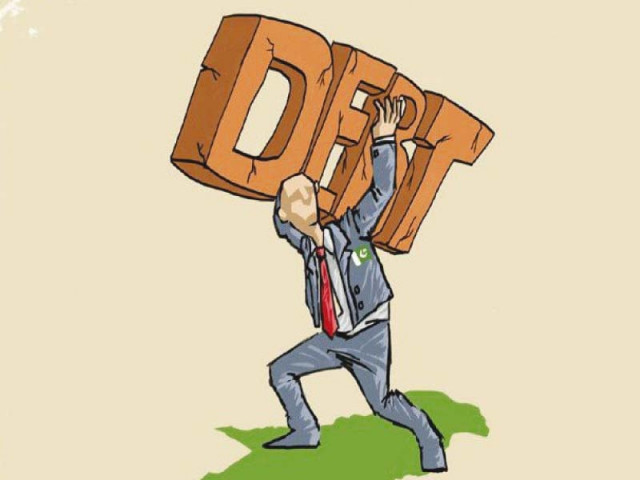Interest payments eat away two-thirds of govt revenue
Govt incurs Rs416-billion expense to service domestic and foreign debt

Govt incurs Rs416-billion expense to service domestic and foreign debt. CREATIVE COMMONS
The government has incurred an expense of Rs416 billion as interest on domestic and foreign loans during the period between July and September this year, highlighting a deepening concern among the public and economists over the country’s debt affordability issue.
The amount ate up almost two-thirds of the government’s tax revenue and was nearly half of the total federal expenses.
Out of Rs864.9 billion that was incurred as expense by the federal government in July-September, Rs415.9 billion were on account of debt servicing, according to a fiscal operations summary released by the Ministry of Finance on Monday.
Debt payments constituted 48% of the total federal expense, showed the report, a ratio that was 36% by end of last fiscal year 2014-15. In terms of revenues, debt payments were 62.5% of the total tax revenues of Rs664.3 billion.
When compared with the Federal Board of Revenue’s (FBR) total tax collection of Rs600 billion, debt payments consumed 69% of the FBR collection.
Of the total debt expense, Rs396.9 billion was paid as interest on domestic debt while Rs19 billion was paid to service foreign debt.
In addition to debt servicing, the federal government retired Rs94.3 billion external debt during this period. However, external debt repayment was made by borrowing more foreign loans, therefore, these were not booked on the budget.
Moody’s Investors Service has recently cautioned that Pakistan’s debt affordability had weakened due to a shift towards expensive sources of foreign borrowing.
According to the IMF report, Pakistan will require over $2 billion this fiscal year to finance interest payments on external debt.
No room for development
Meanwhile, the finance ministry report also revealed that an amount of Rs145.6 billion or roughly 17% of the total expense was spent on defence affairs. Effectively, debt and defence consumed 62.5% of the total expense, leaving little for development and running the affairs of the civilian government.
Federal development spending stood at just Rs71.7 billion or 8.3% of the total, showed the Ministry of Finance’s quarterly bulletin.
The federal budget deficit - the gap between income and expenses - stood at Rs288 billion or roughly 1% of Gross Domestic Product (GDP). The overall budget deficit that includes provincial expenditures stood at 1.1% of the GDP - Rs22 billion higher than the ceiling allowed by the IMF.
On account of missing the target, Pakistan has sought a waiver from the IMF Board, which is scheduled to meet on December 15, provided the country introduces a mini-budget to bridge shortfall in tax revenues.
For the current fiscal year, the IMF has allowed Pakistan to have a budget deficit equivalent to 4.3% of the GDP -a target that is likely to be missed.
In his recent policy statement on debt in the Senate, Finance Minister Ishaq Dar has stated that although the country’s debt was increasing in absolute terms, in terms of size of the national economy the debt was declining. He said the parliament approves the budget deficit ceiling thus, allowing the federal government to borrow more.
The IMF has been asking Pakistan to improve its debt management profile. In the Memorandum of Economic and Financial Polices that the finance minister submitted to the IMF seeking the last loan tranche, Pakistan has made fresh commitments to improve its debt profile.
It stated that in light of the recently increased reliance on domestic bank financing, Pakistan would diversify financing resources, including measured use of external financing.
It has committed to the need of reducing rollover risks, fully assess off-budget fiscal risks, diversify financing from both domestic and external sources, lengthen the maturity profile of domestic debt, and improve the balance between domestic and external debt.
A recent report by the Ministry of Finance showed that 8.1% of the external debt and 47.3% of the domestic debt was maturing within one year. Due to short-term nature of debt, the interest rate risks were also high.
Pakistan has also committed with the IMF to improve the effectiveness of the Debt Policy Coordination Office and its integration in the Ministry of Finance’s core functions.
Published in The Express Tribune, November 17th, 2015.
Like Business on Facebook, follow @TribuneBiz on Twitter to stay informed and join in the conversation.

















COMMENTS
Comments are moderated and generally will be posted if they are on-topic and not abusive.
For more information, please see our Comments FAQ